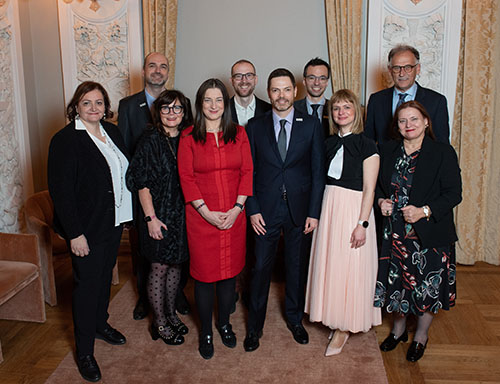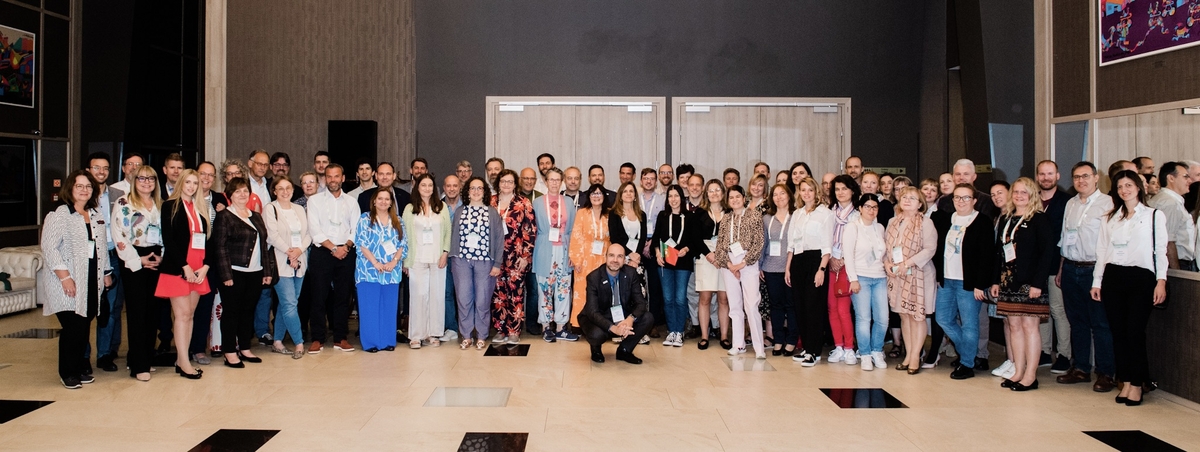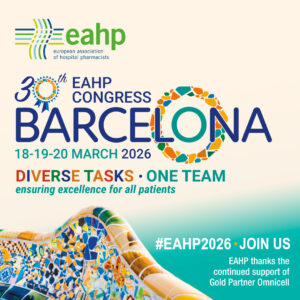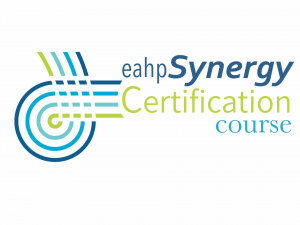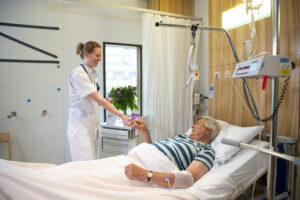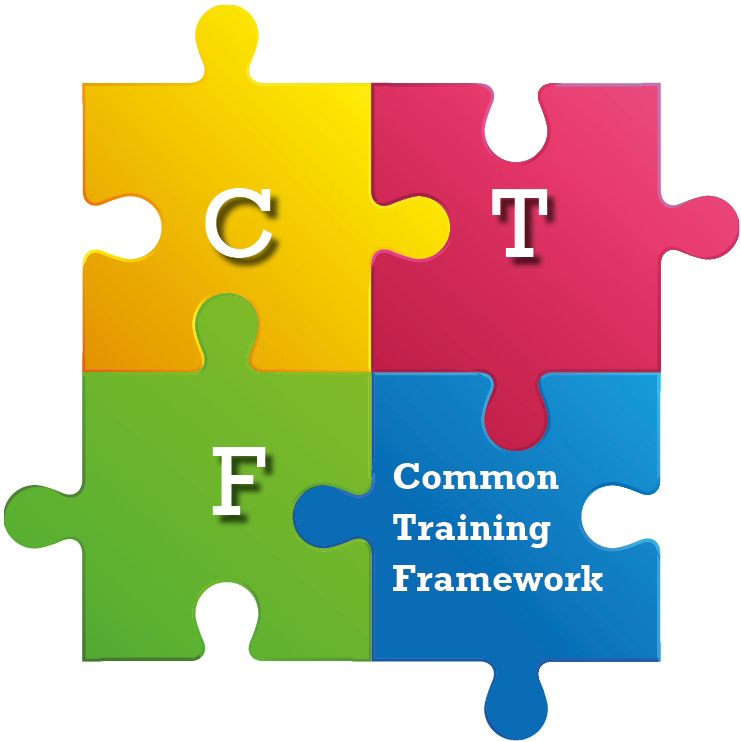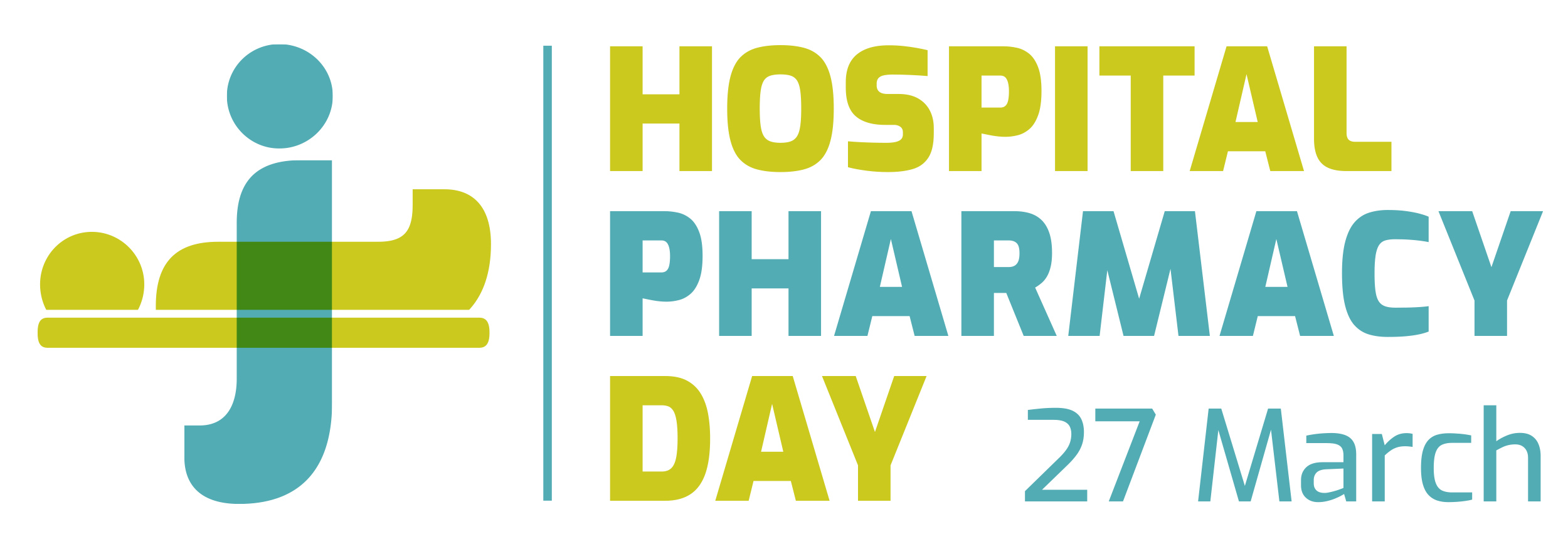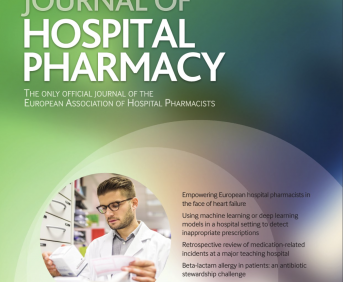DEVELOPMENT AND IMPLEMENTATION OF A CAR-T CELL THERAPY PROGRAM IN ADULTS
European Statement
Clinical Pharmacy Services
Author(s)
Natalia Toledo Noda, Víctor Quesada Marqués, María Leonor Oliva Hernández, Nayra Sangil Monroy, Marta María Piñero González, María Victoria Morales León
Why was it done?
The implementation would allow access to this novel therapy to patients who have already exhausted all lines of treatment. The Ministry of Health decides to establish an administration point in the hospital, since due to its geographical location (European ultra-periphery) it would avoid the transfer of patients to other reference centers.
What was done?
Development and implementation of a CAR-T cell therapy administration program in adults.
How was it done?
In November 2018, the Ministry of Health authorized the center to use CAR-T treatment in adult patients with relapsed or refractory diffuse large B-cell lymphoma or with B-cell acute lymphoblastic leukemia. The hospital was prepared to meet specific quality criteria (JACIE Accreditation). Interhospital protocols were developed for the referral, transport, and study of candidate patients from other centers.
What has been achieved?
1. A multidisciplinary team was created made up of professionals from Hematology, Intensive Care Medicine, Neurology and Pharmacy Services, with the aim of assessing candidate patients. A qualified team oversees the clinical management, follow-up, analysis of adverse effects and results obtained.
2. The professionals involved were trained to ensure safe administration and to identify and treat possible complications.
3. Due to the special storage conditions of the drug, a circuit was established. It is storage in the Hematology Service under the supervision of the hospital pharmacist specialized in onco-hematology.
4. One of the most frequent complications of the therapy is cytokine release syndrome. Depending on the gravity, drugs such as tocilizumab should be given as soon as possible. To ensure its availability, the Pharmacy Service permanently reserves two doses. At the time of performing a CAR-T, the automated dispensing system of the hematology ward is provided with the first dose, along with a preparation sheet and its corresponding label in order not to delay its administration. The second dose remains in the Pharmacy Service.
To date, 8 infusions have been made. 100% of the patients had diffuse large B-cell non-Hodgkin lymphoma.
What next?
Facilitate access to this therapy to more patients. Generate data that support its efficacy and safety in real life.
Obtain the accreditation of the center to use the new therapies authorized by the European Medicines Agency.
Role of Hospital Pharmacist in the compassionate use of Risdiplam since the submission to Ethics Committee to the therapy in patients affected by Spinal Muscular Atrophy: an example of close collaboration with the neuromuscular team.
European Statement
Introductory Statements and Governance
Author(s)
Anna Esposito, Claudia Panico , Loretta Cervi, Emilio Albamonte, Alice Zanolini, Valeria Sansone
Why was it done?
This allows a standardized and safe access to this therapeutic opportunity in close collaboration with the NT formed by child neurologist and neurologists.
What was done?
The hospital pharmacist (HP) supports the neuromuscular team (NT) in submitting the request to access compassionate use with Risdiplam in patients affected by spinal muscular atrophy (SMA). Risdiplam is an orally administered, survival motor neuron 2-directed RNA splicing modifer for the treatment of SMA.1 The HP is involved in Ethics Committee (EC) approval, is responsible for reconstituting and storage of oral solution and is also responsible of re-supply and pharmacovigilance surveillance. This allows a standardized and safe access to this therapeutic opportunity in close collaboration with the NT formed by child neurologist and neurologists.
How was it done?
HP is involved from the initial phases of the compassionate use of the drug. The NT that screens and enrolls the patients in the compassionate use program with Risdiplam by submitting a formal request to the EC. The teams of the EC, which includes the HP, evaluates the appropriateness and inclusion criteria for each patient. Once the patient is considered eligible, and treatment is approved, the HP receives the drug from Pharma, provides quality control and assigns the drug for each patient. HP prepares the oral solution and stores the products at 2-8°C until dispensing. After the initial dispensation it is the HP’s responsibility to work closely with the NT in order to maintain treatment over time, ensuring the right timing for re-supply of the drugs and medical devices.
What has been achieved?
There are currently 30 patients on therapy and they are monitored to ensure re-supply and reporting of any adverse events. Home delivery procedure was implemented in agreement with EC in cases where outpatient dispensing was difficult, especially due to logistical difficulties caused by the Covid-19 pandemic, if clinical conditions were stable. In addition, a strong collaboration between the HP and NT was implemented in order to provide access to an increasing number of patients.
What next?
Risdiplam has recently been approved and the HP is involved in the procurement and maintenance of ongoing therapies and ensures supply to new patients. The drug is under negotiation and HP will be involved in contracting procedures based on the expected number of patients and definitive inclusion criteria to access the drug
TELEPHARMACY PROGRAMME IN CHRONIC NEUROLOGICAL PATIENTS DURING THE COVID PANDEMIC
Pdf

European Statement
Clinical Pharmacy Services
Author(s)
ROSARIO MORA-SANTIAGO, JOSE-LUIS ORTIZ-LATORRE, ELENA SANCHEZ-YANEZ, ANGEL JURADO-ROMERO, ISABEL MOYA-CARMONA
Why was it done?
During the health alert caused by Covid-19, home delivery was quickly implemented in our country to reduce attendance at the Hospital Pharmacy Service (HPS) to obtain their medications.
In our HPS we transform home delivery into telepharmacy program (TP) with chronic neurological patients, who suffering pathologies that decrease their autonomy, with the purpose to optimize clinical outcomes and reduce the risk of contagion.
What was done?
The main purpose was to design a telepharmacy program (TP) undertstood as the provision of pharmaceutical care by pharmacists through the use of telecommunications to patients located at a distance. Telepharmacy services include patient follow-up and clinical service delivery. In our case, home delivery is also included.
How was it done?
We design the TP stratifying stable chronic patients (more than 6 months of treatment) by level of autonomy, physical distance to our Hospital and high risk (due to immunosuppressive treatment). Inclusion in the TP was proposed to patients with multiple sclerosis (MS) and aminotrophic lateral sclerosis (ALS).
Telepharmacy appointments were recorded and scheduled within the outpatient care activity, they were recorded in the patient’s medical history, as a pharmaceutical clinical follow-up, reviewing adherence, interactions and possible adverse events. Later, home delivery was made, through an external logistics company. Patients gave their consent to transfer personal data for home delivery.
Data collected were: sex and age, first or second line treatment in MS patients, pharmaceutical form (pill or syrup ) in ALS patients and number of total deliveries made.
What has been achieved?
We started on April 2020 with the program, six months later 56 patients were included, 48 with MS (total of MS patients attended by our HPS: 296) and 8 with ALS ( total of ALS patient attended by our HPS: 58). Median age: 45 years in MS group and 65 in ALS group. In MS group 37 patients received 1st line treatment and 10 second line. In ALS patients 6 received tablets and 2 syrup.
420 deliveries took place (average: 3,1 for patient).
What next?
The implementation of the TP was well accepted, avoiding longed displacement in patients with neurological pathologies. Our future target is to reach a greater number of patients that can be included in the program.
AN ITERATIVE APPROACH TO THE DEVELOPMENT OF PHARMACOLOGICAL MANAGEMENT GUIDELINES FOR THE TREATMENT OF PAEDIATRIC INFLAMMATORY MULTISYSTEM SYNDROME – TEMPORALLY ASSOCIATED WITH SARS-CoV-2
European Statement
Clinical Pharmacy Services
Author(s)
CAROL ANN JONES, NANNA CHRISTIANSEN
Why was it done?
Starting in mid-April 2020 as a result of the Coronavirus pandemic, a cluster of patients displaying multisystem inflammation and shock were admitted to our hospital. Similar cohorts have subsequently been reported internationally. Over a 6 week period, in which our institution cared for over 70 children with the newly described PIMS-TS, we developed new pharmacological treatment guidelines. Due to the novelty of the disease, treatment options were unclear and decisions were made by a multidisciplinary team (MDT) of clinicians and pharmacists.
What was done?
This good practice initiative describes the rapid and iterative development of a treatment pathway for the newly described Paediatric Inflammatory Multisystem Syndrome – Temporally associated with SARS-CoV-2 (PIMS-TS). Due to the similarity to Kawasaki disease and septic shock, the routine treatments for these conditions were considered as well as the experience of our adult colleagues, especially in terms of anticoagulation and hyper-inflammation seen in patients presenting with COVID-19. This ensured holistic management plans could be made to provide the highest quality of care.
How was it done?
A MDT of clinicians (intensivists, infectious diseases, cardiologists, rheumatologist, haematologists, endocrinologists) and pharmacists arranged daily meetings to discuss admitted patients as well as pulling together information to formulate a treatment guideline to enable the safe management of these patients. Version one of the treatment pathway was approved in April 2020, by beginning of June version 6 was published. The final treatment pathway included intravenous (IV) immunoglobulin, IV methylprednisolone, aspirin, venous thromboembolism (VTE) prophylaxis and immunomodulation therapy including tocilizumab, infliximab and anakinra.
What has been achieved?
A total of 74 patients have been successfully treated against the treatment pathway, and discharged from hospital. Managing a new condition with no published evidence on treatment was a huge challenge, especially given the large numbers and high acuity of patients. Collaborative learning and reflection has enabled us to develop a robust treatment pathway for our patients. We have witnessed MDT working at its best, united with the sole aim of combating this rare condition.
What next?
An ongoing coordinated effort is required to undertake paediatric research to understand PIMS-TS and establish the most effective treatment for this novel disease.
Possible interactions from COVID-19 drug employment: the Hospital Pharmacist’s intervention in a regional hospital
Pdf

European Statement
Patient Safety and Quality Assurance
Author(s)
Simone Leoni, Sabrina Guglielmi, Vincenzo Nicola Menditto, Adriana Pompilio, Francesca Vagnoni
Why was it done?
During the pandemic, almost all hospital departments were converted in COVID-19 wards and clinicians of several specializations were asked to work in. In a situation characterized by a great number of patients, mainly old and with several comorbidities, health professionals had to employ quickly drugs never used before and supported by limited scientific evidences. In this context the percentage of possible DDI rises out of proportion exposing patients to potential devastating consequences.
What was done?
During COVID-19 emergency we develop a quick reference tool for clinicians involved in first line assistance to patients. A table summarizing drug-drug interactions (DDI) of the most used therapies was created to allow professionals making the best pharmacological decision.
How was it done?
After a literature review using Micromedex and TERAP (Mario Negri Institute), we have created two table summarizing DDI of lopinavir/ritonavir (LR) and hydroxychloroquine (HC). Those drugs have been grouped according to pharmacological group and clinical relevance. The tables were provided to Infectious Disease, Intensive Care Unit and Emergency Medicine departments.
What has been achieved?
The tables showed 359 DDI for LR (67% contraindicated/severe, 12% major and 21% moderate) and 176 for HC (96% contraindicated/severe, 1% major and 3% moderate). Almost all contraindicated/severe interactions of HC were the same of LR and regarded: protein kinase inhibitors, beta2 agonists, macrolides and fluoroquinolones antibiotics, some antidepressants, phenothiazines, protease inhibitors and antiarrhythmics. Other LR severe interaction were: factor Xa inhibitors, statins and benzodiazepine derivates. Both LR and HC present moderate interactions with acid pump inhibitors, while LP interacts with Ca and vitamin K antagonists and antiepileptics.
Interactions mentioned have a great impact, since they concern drugs commonly used and hypertension, diabetes, respiratory system disease, cardiovascular disease are the most frequent comorbidities linked to COVID-19. Tables provided had a positive impact in avoiding DDI. Pharmacist was consulted for drug dosing and frequency adjustments. The intervention was fully accepted and extended to the rest of COVID-19 wards.
What next?
The project represents a good example of multidisciplinary collaboration able to improve safety and efficacy in pharmacological treatments. The added value of the Pharmacist and the simplicity of the tool make it useful and easy to extend to other healthcare settings.
ISMP MEDICATION SAFETY SELF ASSESSMENT® FOR HIGH-ALERT MEDICATIONS – ASSESSMENT OF THE SAFETY OF SYSTEMS AND PRACTICES ASSOCIATED WITH SIX CATEGORIES OF HIGH-ALERT MEDICATIONS
Pdf

European Statement
Patient Safety and Quality Assurance
Author(s)
A. Sonnleitner-Heglmeier, M. Jeske, C. Petter, S. Grimm, S. Kerndler, U. Horvath
Why was it done?
The aim of this initiative was to assess, from December 14, 2018 to February 7, 2019, the practices associated with six high-risk drug classes – opioids, insulin, anticoagulants, methotrexate for non-oncological indications, muscle relaxants, chemotherapeutics – and high-risk drugs in general at the Unversity Hospital Innsbruck using the ISMP Medication Safety Self Assessment® for high-risk drugs. A further reason was to build up a strong and active cooperation amongst interdisciplinary teams with the focus on clinical pharmacy to raise awareness towards the competencies of clinical pharmacists.
What was done?
We translated, adjusted and introduced the Medication Safety Self Assessment® for High-Alert Medications from the Institute for Safe Medication Practice (ISMP) – U.S.A. to our university hospital. With a clinical pharmaceutical approach in multidisciplinary teams, we revealed challenges on different wards in the hospital and discussed and planed appropriate solutions.
How was it done?
The first step was to find an appropriate assessment accreditation programm which was found by the ISMP Medication Safety Self Assessment® for High-Alert Medications. This tool offers the opportunity to assess the safety of systems and practices associated with up to 11 categories of high-alert medications. As the assessment was written in english it had to be translated by us into german for a better basis for discussions. Further, as the ISMP assessment is implemented in the U.S.A., words and processes had to be adjusted to the work in an austrian university hospital. To optimize the outcome of the ISMP, the drug therapy pharmacy department, health care practitioners, and care management, jointly implemented a quality assurance project.
What has been achieved?
Different hazardous workflows and medication handling processes beginning from pharmacy despensing until receiving patients got identified and discussed. The urgent need of a patient data management system was emphasized to safely ensure a closed loop medication management. This would allow a clear and trackable communication in and between different wards and reduction in errors made by clincal staff.
What next?
The foundation was built for compulsory personal trainings done by clinical pharmacists on different wards. The awareness towards the importance of clinical pharmacy was strongly increased leading to more inclusion e.g. developing guidelines.
TELEMEDICINE AND HOMEDELIVERY: MANAGEMENT OF THERAPEUTIC CONTINUITY IN THE PANDEMIC ERA.
Pdf

European Statement
Clinical Pharmacy Services
Author(s)
Marta Del Vecchio, Federica Chinotti , Claudia Lauria Pantano, Elirosa Minniti, Erika Cataldo, Francesco Guidoni, Vito Ladisa
Why was it done?
The Severe Acute Respiratory Syndrome – Coronavirus – 2 (SARS-CoV-2 ) pandemic made it difficult to monitor the patient’s health condition because many of them were locked down at home, unable to attend routine hospital visits.
What was done?
The hospital pharmacist, focusing on therapeutic continuity, closely collaborated with the clinicians in monitoring patient’s condition using telemedicine and homedelivery services.
How was it done?
In the multidisciplinary team, the pharmacist and the clinician defined the criteria to choose the most suitable patients for the homedelivery service. One of the options was to dispense the drug in a neighboring hospital. Because of the sanitary system regionalization, some of those hospitals could have been located even more than 100 km away, resulting in a problem for the most critical patients. In order to help them, home delivery and telemedicine services has been considered. The clinician used to visit patients on digital platforms, making clinical evaluations based on the results of blood tests, diagnostic tests and imaging techniques. According to clinician’s indications, the pharmacist took contact with patients, in first to collect informations about any residual storage of the drugs, adverse reactions, therapeutic compliance and then to proceed with the delivery. Everything has been done in conformity with the General data protection regulation (GDPR).
What has been achieved?
From March to September 2020, the homedlivery service count 501 speditions all over the Nation, 480 patients has been contacted to recive therapy and 250 of them has been intensively monitored by calling to manage their follow up. Everything has been done in order to protect critical patients from pandemic, safeguarding the therapeutic continuity,in compliance with pharmacovigilance, risk managment and cost saving for the national health system, considering that the suspension of therapies could be considered an additional and not quantifiable cost, but certainly important.
What next?
The hospital pharmacist must collaborate ever more with the clinician even in the post-pandemic phase, remotely managing not only the most weak patients, but extending the telemedicine and homedelivery services to an increasing number of patients, in order to safeguard their health .
IMPLEMENTATION OF A SAFE EXTERNAL DISPENSING SYSTEM DURING THE COVID-19 PANDEMIC IN A REFERRAL HOSPITAL
Pdf

European Statement
Clinical Pharmacy Services
Author(s)
MARINA CORRALES PAZ, CLAUDIA RODRIGUEZ MORETA, INMACULADA LOMARES MANZANO, ANA GANFORNINA ANDRADES
Why was it done?
Due to the health crisis caused by the SARS-COV-2 virus, many hospitals have seen
the necessity to implement a safe dispensing system (telepharmacy) to provide medication to
high risk patients and those infected with Covid-19 in order to prevent interrupting their
treatments.
What was done?
To implement a system that guarantees a sure and effective supply of medical treatments to those vulnerable patients, those at increased risk or with difficult access to the hospital during the coronavirus pandemic.
How was it done?
A database was created with those patients attending our hospital’s outpatient service(OS)to pick up their medication within the next 7 days, verifying through pharmaceutical software and the patient’s medical history records (MHR)their next dispensing date. After checking if the patient had a medical appointmentthat could coincide with the dispensing date, a phone interview was conducted with the patient to schedule the pick-up of the medication through theOS or by telepharmacy(patients’ consent was requiredto use their personal information and we asked how the treatment was going). In our case the patients could pick-up their medication in the referral hospital (RH), a newly created OS in an affiliate hospital or by telepharmacy toprevent the collapse of the hospitals. We registered: number of patients attended in RH, new OS or by telepharmacy and number of dispensations. Patients were grouped in areas based on their city and delivery date for telepharmacy and in the case of patients picking up their own medication they were made an appointment.
What has been achieved?
During the months the state of emergency was in place in Spain (March 14th– June 21st)3385 patients were attended in total and 9316 medicationswere dispensed. 2245(66.3%) patients were attended in the RH (5794 dispensations), 583(17.2%) patients were attended through the new OS (1436 dispensations) and the rest 557(16.5%) had their medication sent to their address (2086 dispensations).
What next?
A safe and effective dispensing system was achieved to outpatients during the Covid-19 pandemic through the implementation of a new telepharmacymethod and the establishment of a new OSthat allows convenient dispensation of medication while minimising the risk of virus spread.
MEDICATION MANAGEMENT OF COMBINATION THERAPY IVACAFTOR , TEZACAFTOR AND ELEXACAFTOR FOR CYSTIC FIBROSIS PATIENTS WITH THE F508del MUTATION BY THE HOSPITAL PHARMACY IN A CENTRAL GENERAL HOSPITAL
Pdf

European Statement
Clinical Pharmacy Services
Author(s)
DESPOINA MAKRIDAKI, KALLIOPI ALLAGIANNI, NIKOLAOS SKORDAS
Why was it done?
In our hospital is located the main CF Unit for Adults in the country. Ensuring that as many as possible young patients benefit from accessing the new and crucial treatment, even during COVID-19 period, reflects our commitment to improve patients’ outcomes and overall survival,
What was done?
A Phase 3, open-label clinical trial (CT) with 3 enrolled patients runs since April 2019 and two early access (EA) programs with 23 enrolled patients run since the end of July 2020 to permit the access of cystic fibrosis (CF) patients with the F508del mutation in the innovative combination therapy of ivacaftor, tezacaftor and elexacaftor (IVA/TEZA/ELEXA) in our hospital.
How was it done?
3 outpatients enrolled in the CT and procedures regarding the protocol have been followed strictly. Medication dispensing is conducted every 12 weeks.
In the EA procedure, 2 parallel programs have been approved by authorities, one for the homozygous including 19 patients and one for the heterozygous including 4 patients. Dispensing is programmed every 4 weeks, although an initial stock for 3 months was shipped to pharmacy.
The role of HPs was decisive for the quick start of the EA programs during COVID-19 period. Roadmap was designed at the beginning by HPs in collaboration with the physicians to accelerate approval and shipment procedures and also regarding licensing for each patient, drug receipt, storage, dispensing, accountability, electronic registry in designated EA platform and additional electronic recording and follow up in the electronic Pharmacy platform for both the IVA/TEZA/ELEXA and supporting therapies (e.g. inhaled antibiotics, a-dornase)
For 17 EA patients with chronic obstructive pulmonary disease in exacerbation, hospitalization before starting the IVA/TEZA/ELEXA therapy was necessary. HPs monitored closely their cartexes to avoid adverse reactions and delays in therapy.
HPs served all outpatients on personal afternoon appointments, to avoid overcrowding in the hospital during the pandemic.
What has been achieved?
Critically ill patients have been able to receive in priority the IVA/TEZA/ELEXA treatment, without cost, and valuable scientific experience has been gained.
What next?
EA programs have received 3 months extension until reimbursement negotiations are completed by authorities. In the meantime, we design a cost affordable procedure to ensure continuity of access for our patients.
Early detection of prerenal acute kidney injury (AKI) inpatients through multidisciplinary action.
Pdf

European Statement
Clinical Pharmacy Services
Author(s)
MARGARITA BELTRAN GARCÍA, NATALIA MARTÍN FERNÁNDEZ, MERCEDES SALGUEIRO LAZO, SANTIAGO SANDOVAL FERNÁNDEZ DEL CASTILLO, MIGUEL ÁNGEL CALLEJA HERNÁNDEZ, ANTONIO LEÓN JUSTEL
Why was it done?
AKI is an underdiagnosed syndrome due to delay in detection and late referral to the nephrology unit. A real-time electronic alert system integrated into a multidisciplinary protocol could be useful for early identification and diagnosis.
Among the risk factors associated with AKI is the use of nephrotoxic drugs such as NSAIDs and COX-2, ACE inhibitors and ARA-II, Cyclosporine and Tacrolimus.
What was done?
A multidisciplinary protocol was established for the detection and early action of prerenal AKI inpatients with hospital and Primary Care monitoring.
How was it done?
An authomatic electronic tool, agreed between Biochemistry and Nefrology units, was designed for the selection of AKI patients. The pharmacist was contacted when a prerenal AKI was detected, who generated an alert in the electronic prescription system in order to recommend actions related to prescribed nephrotoxics drugs. An analysis was request to check renal function in these patients, after 48 hours in the hospital and after 1 month of discharge from the Primary Care.
There were many previous meetings and the leadership of each unit was maintained in the participation of strategies.
What has been achieved?
The aim was to improve the detection of prerenal AKI in inpatients and increase the quality of healthcare in these patients.
For this 3-month pilot phase, were selected 3 clinical unit and 9 prerenal AKI cases have been detected. The most frequent risk factors were: 9 cases due to volume deplection, 6 due to nephrotoxic drugs use and 3 due to chronic kidney damage (CKD). The measures adopted were: add fluid therapy in all cases, cancel nephrotoxic drugs and modify the diuretic drugs prescription in 6 of 7 cases. There was only 1 death.
What next?
This strategy will be extended to all hospital clinical units. Data will be obtained on incidence and morbidity and mortality in these patients, as well as on length of hospital stay.
